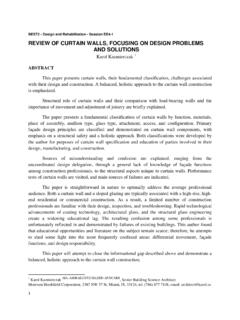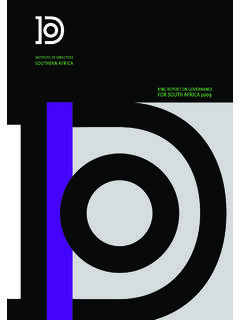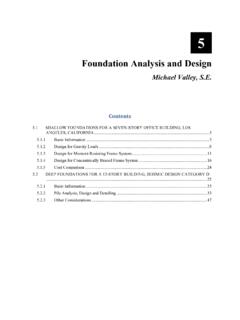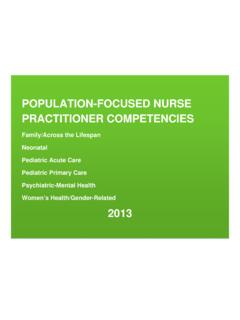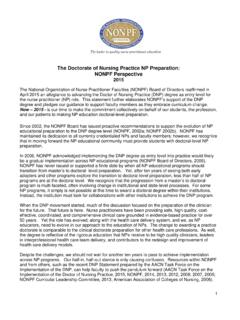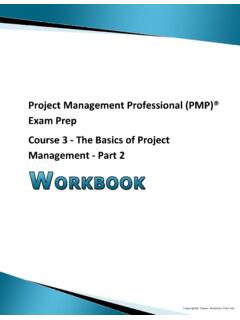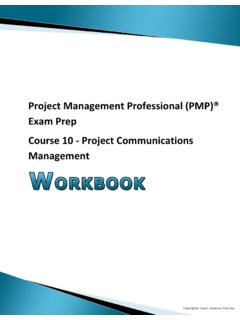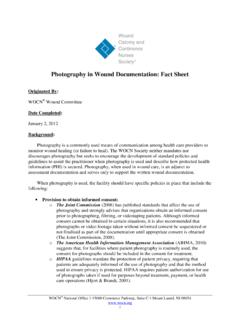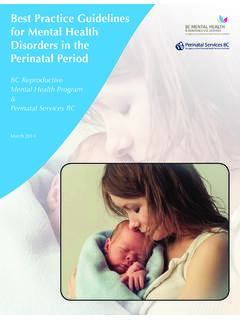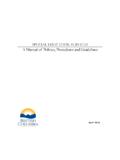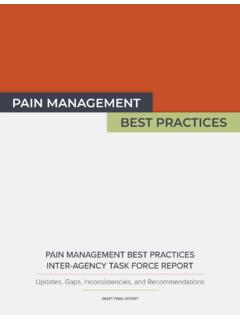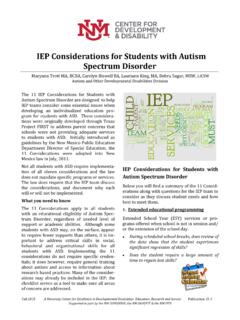Transcription of Wheelchair Seating Pocket Guide
1 Wheelchair Seating Pocket Guide Selecting Wheelchair Seating components for pressure injury managementThe National Pressure Injury Advisory Panel (NPIAP) has done the industry a huge service by creating the Clinical Practice Guideline (CPG) to help unify all disciplines with a comprehensive literature review on pressure injury prevention and treatment. Rigorous appraisal of published research resulted in evidence-based recommendations that all disciplines can and should follow to consistently apply best practice to pressure injury management. By referencing the 2019 CPG, physicians, physician assistants, nurse practitioners, nurses, and therapists will understand the importance the seated posture plays in the prevention and treatment of pressure injuries to consistently apply best practice.
2 Purpose Clinical Practice Guideline cited throughout:European Pressure Ulcer Advisory Panel, National Pressure Injury Advisory Panel and Pan Pacific Pressure Injury Alliance. Prevention and Treatment of Pressure Ulcers/Injuries: Clinical Practice Guideline. Emily Haesler (Ed.) EPUAP/NPIAP/PPPIA: number one factor in common among all Wheelchair users is impaired mobility. As stated in the introduction of 2019 CPG, a number of contributing or compounding factors are associated with pressure injuries; the primary of which is impaired mobility. Support surfaces specifically designed with skin protection properties should be used with clients with certain risk factors, instead of entry-level surfaces.
3 According to the NPIAP, the following factors impact pressure injury (PI) risk. Refer your client to therapy for a Seating and wheeled mobility evaluation if any of these apply:What type of client should be using a specialized skin protection support surface such as a seat or back support? Limited mobility and limited activity Previous/current pressure injury , , Alterations to skin condition over pressure points Pain at pressure points Diabetes mellitus Perfusion and circulation deficits Oxygenation deficits Impaired nutrition Moist skin Increased body temperature Older age Impaired sensory perception Obesity NPIAP published Good Practice Statements (GPS) regarding the screening process to quickly identify clients at risk.
4 Consider implementing the following processes: Conduct a PI risk screening as soon as possible after admission to the care serviceand periodically thereafter. Perform quarterly and annual screens or upon signs and symptoms of change inmedical condition Develop and implement a risk-based prevention plan for individuals identified asbeing at risk. (see risk factors on previous page) Conduct a comprehensive skin and tissue assessment for all individuals at risk ofpressure injury: As soon as possible after admission/transfer to the healthcare service As part of every risk assessment Periodically as indicated by individual s degree of PI risk Prior to discharge from care serviceUtilize a screening tool such as the sample on the next page.
5 Feel free to copy and use it as an initial screen during your assessment. How do I identify these at risk clients? According to the NPIAP CPG, consider the following factors for risk of pressure injury. *If your client is a full-time Wheelchair user, always refer to a Seating screening Physical impairments that could increase risk of pressure injury:PRESENT? Y/N Limited mobility and limited activity NoPrevious/current pressure injury , , Yes NoAlterations to skin status over pressure points NoPain at pressure points NoDiabetes mellitus NoPerfusion and circulation deficits NoOxygenation deficits NoImpaired nutrition NoMoist skin NoIncreased body temperature NoOlder age NoImpaired sensory perception NoIf you answer yes to any of the risk factors action:Prescribe a skin protection support surfaceTake action.
6 Refer to therapy for Seating evaluation*Once I know I have an at risk client, what does the Clinical Practice Guideline recommend? The CPG recommends the following for an at risk client:Select a support surface that meets the individual s need for pressure redistribution based on the following factors: GPS - Level of immobility and inactivity Need to influence microclimate and shear reduction Size and weight of the individual Number, severity, and location of existing PIs Risk for developing new PIsFor individuals with a PI, consider changing to a specialty support surface when the individual: GPS - Cannot be positioned off the existing PI Has PIs on two or more turning surfaces that limitrepositioning options Has a PI that fails to heal or the PI deterioratesdespite appropriate comprehensive care Is at high risk for additional PI Has undergone flap or graft surgery Is uncomfortable Bottoms out on current support surfaceSelect a seat and Seating system support surface that meets the individual s need for pressure redistribution with consideration to.
7 GPS - Effects of posture and deformity on pressuredistribution Body size and configuration Mobility and lifestyle needsFor individuals with obesity, select a support surface with enhanced pressure redistribution, shear reduction and microclimate features. GPS - a pressure redistribution cushion for preventing pressure injuries in people at high risk who are seated in a chair/ Wheelchair for prolonged periods, particularly if the individual is unable to perform pressure relieving maneuvers. a bariatric pressure redistribution cushion designed for individuals with obesity on seated surfaces. individuals with or at risk for a pressure injury, consider using a pressure redistributing support surface during transit.
8 GPS - , when concentrated in a small surface area, creates high peak pressures. When the force is spread over a greater surface area, the peak pressure is reduced. How do I redistribute pressure away from high risk areas? According to the CPG, when immobility is a key issue, the seat support surface should redistribute pressure away from high risk areas through the methods of pressure redistribution: immersion, envelopment, and/or offloading. The method we choose should be based on the individualized needs of the client. Seat surfaces can immerse, envelop, or either partially or completely offload the client, to assist in the prevention or treatment of a pressure injury.
9 PARTIALCOMPLETEP ressure redistribution methods Common areas of pressure injury development when seated in a Wheelchair A Seating system is a combination of the Wheelchair , cushion, back support, and any ancillary accessories required. Properly fitting components for each individual must be selected, or they may cause just as much damage as not having them at TuberosityHeelsLower extremity supportsUpper extremity supportsHead supportBack supportSpinous ProcessGreaterTrochanterSeat support along with back support to maintain proper positioning of the trunk and pelvisElbowAbsolutely not! It is a Seating surface in daily use needs to be taken into consideration.
10 For clients who use a Wheelchair , a quality skin protection cushion is only as good as the system it is placed in. The ideal Seating system consists of: Should I only be concerned with the seat support (cushion) when pressure injury prevention and treatment is the goal? The Wheelchair base, correctly configured to match the client s measurements andrange of motion limitations The back support, which positions the trunk to optimize pelvic positioning, furtheraiding in the prevention and treatment of a pressure injury The seat support (cushion) which will immerse and envelop or offload for optimalpressure redistribution and positioning Any needed accessories to add stability, redistribute pressure, and allow for functionFor this reason, when the need for skin protection has been identified, a Seating referral to a specialized Seating therapist is is the process for getting my client what is needed?
